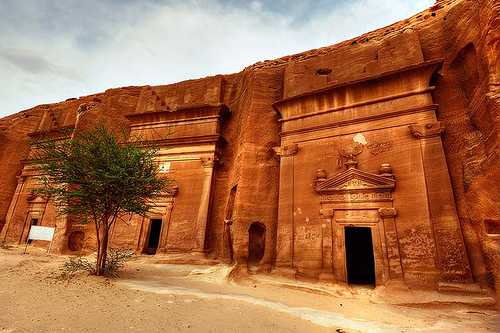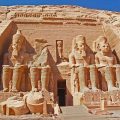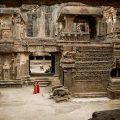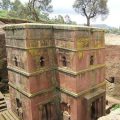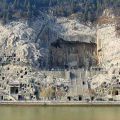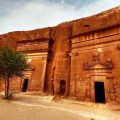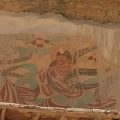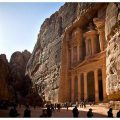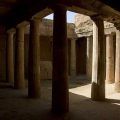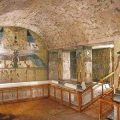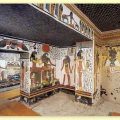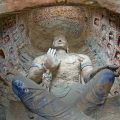Since the dawn of our civilization rock-cut architecture was used to carve structures, temples, deities by cutting solid rocks. If you search you will find various such architecture around the world which are built by shear hard work by our ancient ancestors. Following are top temples which are carved on Rocks:
1. Lycian Tombs, Tuekey: Lycian Tombs are carved directly on the face of rock.
2. Tomb of the Kings, Paphos: Built in 4th century, Tomb of the Kings is carved out of the solid rock and decorated with Doric columns.
3. Mogao Caves, China: Mogao caves are one of the finest examples of Buddhist art. Along with the Longmen Grottoes and Yungang Grottoes, the Mogao Caves are one of the three most famous ancient sculptural sites in China.
4. Mada’in Saleh, Saudi Arabia: Mada’in Saleh is notable for its desert landscape, marked by sandstone outcrops of various sizes and heights. Its now in the list of UNESCO world heritage sites.
5. Yungang Grottoes, China: The Yungang Grottoes are an outstanding example of the Chinese stone carvings from the 5th and 6th centuries. All together the site is composed of 252 grottoes with more than 51,000 Buddha statues and statuettes.
6. Longmen Grottoes, China: The Longmen Grottoes are densely dotted along the Xiangshan and Longmenshan mountains in the the eastern central part of China. From north to south, the distance covered by grottoes is about one km.
7. Lalibela Churches, Ethiopia: Lalibela is one of Ethiopia’s holiest cities, second only to Aksum, and is a center of pilgrimage for much of the country. The Church of St. George is the most well known and last built of the eleven churches. The dimensions of the complex are 25 meters by 25 meters by 30 meters, and there is a small baptismal pool outside the church, which stands in an artificial trench.
8. Churches of Göreme, Turkey: After a volcanic eruption about 2000 years ago, lava formed soft rocks in the Cappadocia Region, in Turkey. People of Goreme built various churches and monasteries out from these soft rock formations.
9. Ellora Caves, India: Ellora represents the epitome of Indian rock-cut architecture. The 34 Buddhist, Hindu and Jain rock cut temples and monasteries were built between the 5th century and 10th century. The Buddhist caves were the earliest structures and consist mostly of large, multi-storey buildings carved into the mountain face, including living quarters, sleeping quarters, kitchens, and other rooms.
10. Valley of the Queens, Egypt: The Valley of the Queens, is a place in Egypt where wives of Pharaohs were buried in ancient times. The necropolis holds more than 70 tombs, many of which are stylish and lavishly decorated.
11. Ajanta Caves, India: Ajanta Caves are rock-cut cave monuments dating from the 2th century BC. The monastic complex of Ajanta consists of several viharas (monastic halls of residence) and chaitya-grihas (stupa monument halls) cut into the mountain scarp. By 480 AD the caves at Ajanta were abandoned.
12. Valley of the Kings, Egypt: The Valley of the Kings is a valley in Egypt where kings were buried after death. The valley contains 63 tombs and chambers, ranging in size from a simple pit to a complex tomb with over 120 chambers. Only the famous tomb of Tutankhamun was spared from the worst of the tomb depredations.
13. Petra, Petra, Jordan: Also known as “rose red city, half as old as time”, is Jordan’s most valuable treasure and greatest tourist attraction. The most elaborate building in Petra is Al Khazneh (”The Treasury”), carved out of a sandstone rock face, it’s massive façade dwarfing everything around it.
14. Abu Simbel, Egypt: Abu Simbel is an archaeological site comprising of two massive rock temples. The twin temples were originally carved out of the mountainside during the reign of Pharaoh Ramesses The Great in the 13th century BC, as a lasting monument to himself and his queen Nefertari. Abu Simbel remains one of Egypt’s top tourist attractions.
Please leave me a comment and share your views with us. Don’t forget to subscribe our RSS to receive latest updates.











